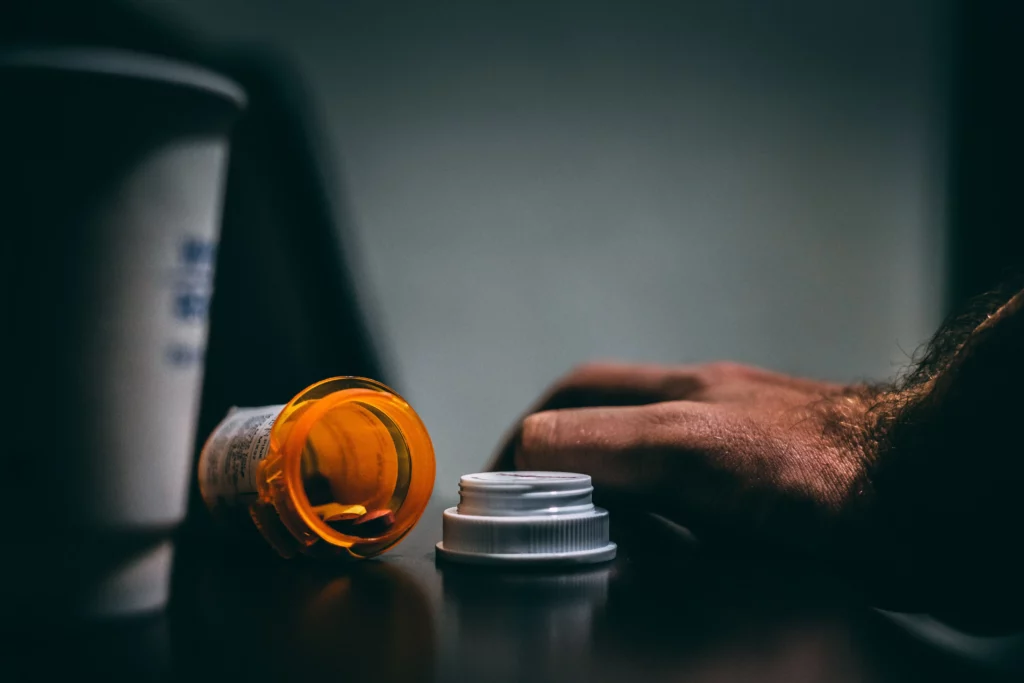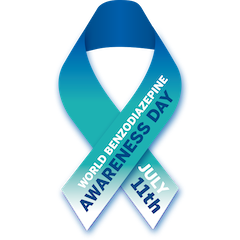Today marks World Benzodiazepine Awareness Day, where we’re taking a closer look at these potent medications.
Benzodiazepines were once considered miraculous drugs of the 20th century that could effectively treat anxiety, insomnia, and other mental health issues.
However, these drugs are now frequently overprescribed and abused, which can result in catastrophic consequences.
Come with us as we explore the controversial world of benzodiazepines, shedding light on their addictive qualities and potential dangers.
The Origins of World Benzodiazepine Awareness Day
World Benzodiazepine Awareness Day, observed annually on July 11, is a globally recognized event that aims to raise public and medical awareness about the potential dangers and risks associated with the use and misuse of benzodiazepines, a class of drugs widely prescribed for their sedative and anxiety-reducing effects.
The campaign was first launched in 2016 by a group of advocates alarmed by the lack of understanding and recognition of the problems associated with benzodiazepines.
The date was chosen to honor Prof. Heather Ashton, a key figure in understanding benzodiazepine dependency, whose work is often cited as the gold standard in managing withdrawal from these drugs.
Over the years, World Benzodiazepine Awareness Day has gained traction, hosting events, webinars, and campaigns worldwide to engage patients, healthcare professionals, and policymakers in understanding the careful balance needed in prescribing and using benzodiazepines.
Understanding Benzodiazepines
Benzodiazepines, often referred to as ‘benzos,’ are a class of psychoactive drugs that have a calming effect on the nervous system.
They work by enhancing the effect of a neurotransmitter called gamma-aminobutyric acid (GABA) in the brain, which results in sedative, hypnotic (sleep-inducing), anxiolytic (anti-anxiety), anticonvulsant, and muscle relaxant properties.
Benzodiazepines are commonly prescribed for various conditions, including anxiety, insomnia, seizures, and alcohol withdrawal.
Some well-known types include diazepam (Valium), alprazolam (Xanax), and clonazepam (Klonopin).
While benzodiazepines can be beneficial for short-term use, prolonged use can lead to dependence and withdrawal symptoms, and their misuse has significant potential for addiction and other adverse health effects.
| Type of Benzodiazepine | Description | Slang Names |
|---|---|---|
| Diazepam (Valium) | Often used to treat anxiety, alcohol withdrawal, and seizures. | V’s, Blues, Benzos |
| Alprazolam (Xanax) | Primarily used for short-term relief of acute symptoms of anxiety and panic disorder. | Xannies, Bars, Z-Bars, Zanbars |
| Clonazepam (Klonopin) | Used for panic disorder and certain types of seizure disorders. | K-Pins, Super Valium |
| Lorazepam (Ativan) | Used for the short-term relief of the symptoms of excessive anxiety. | Atties, Tavor |
| Temazepam (Restoril) | Commonly used for short-term treatment of insomnia. | Jellies, Norries, Eggs |
WORLDWIDE USAGE STATISTICS
Benzodiazepines are among the most widely prescribed medications worldwide, with usage rates demonstrating an upward trend1.
According to the World Health Organization, 5% of the global adult population used benzodiazepines in 2020.
In the United States alone, over 5.2% of adults used these drugs in 2018, a substantial increase from previous years.
European countries like Sweden and Spain also reported high usage rates, with 7.6% and 12.7% of their adult populations using benzodiazepines, respectively.
It’s important to note that these numbers vary widely by demographic factors, such as age and gender.
For instance, older adults and women have been found to use benzodiazepines at a significantly higher rate.
These figures underscore the widespread usage of benzodiazepines and the urgent need for enhanced awareness about their potential risks.
The Impact of Benzodiazepine Misuse and Addiction
The misuse of benzodiazepines is a growing public health concern globally.
According to a report by the Substance Abuse and Mental Health Services Administration (SAMHSA), in the United States, approximately 5.4 million people misused prescription benzodiazepines in 2018.
The misuse rate is exceptionally high among adults aged 18 to 25, accounting for over 17% of the total misuse.
Moreover, benzodiazepines are frequently involved in overdose deaths, often in combination with opioids2.
The Centers for Disease Control and Prevention (CDC) reported that in 2019, nearly 30% of opioid overdose deaths in the US involved benzodiazepines.
Internationally, similar trends have been observed.
For example, a study in Australia reported benzodiazepines were involved in 55% of drug-induced deaths in 2016.
These alarming statistics highlight the importance of benzodiazepine awareness and the need for comprehensive strategies to prevent misuse and related harm.
PHYSICAL AND PSYCHOLOGICAL HEALTH CONSEQUENCES OF LONG-TERM BENZODIAZEPINE USE
Long-term use of benzodiazepines can have a variety of physical and psychological health consequences.
Physically, prolonged use can lead to dependence and withdrawal symptoms, including severe anxiety, restlessness, insomnia, and in extreme cases, seizures.
There’s also an increased risk of falls and fractures, particularly in older adults, due to the drugs’ effects on balance and coordination.
Over time, cognitive impairments, such as memory loss and difficulty concentrating, may also occur.
Psychologically, long-term benzodiazepine use can paradoxically exacerbate the symptoms they are meant to alleviate.
Anxiety and insomnia can worsen than before the medication started, a phenomenon known as rebound symptoms.
In addition, chronic use can lead to depression and an increased risk of suicide3.
Furthermore, the fear of withdrawal symptoms can create a cycle of dependency that can be challenging to break, leading to significant distress and affecting the overall quality of life.
| Health Consequences | Description |
|---|---|
| Dependence and Withdrawal Symptoms | Physical dependence can lead to withdrawal symptoms upon discontinuation, including severe anxiety, restlessness, insomnia, and in extreme cases, seizures. |
| Falls and Fractures | Benzodiazepines can affect balance and coordination, leading to an increased risk of falls and fractures, particularly in older adults. |
| Cognitive Impairments | Prolonged use can lead to cognitive impairments, such as memory loss, difficulty concentrating, and slowed mental processing. |
| Rebound Symptoms | Discontinuation after long-term use can lead to rebound symptoms, where the original symptoms of anxiety or insomnia return at a greater intensity than before the medication was started. |
| Depression and Increased Risk of Suicide | Long-term use of benzodiazepines can lead to mood alterations, including depression, and an increased risk of suicidal thoughts and behaviors. |
| Cycle of Dependency | The fear of withdrawal symptoms can create a cycle of dependency that can be difficult to break, leading to significant distress and negatively impacting the overall quality of life. |
*Please note: this includes only a subset of potential consequences. The experience of long-term benzodiazepine use can vary widely among individuals, depending on dosage, duration of use, individual health status, and more.
SIGNIFICANT RISKS ASSOCIATED WITH WITHDRAWAL
Withdrawal from benzodiazepines, mainly when done abruptly or without proper medical supervision, can pose significant health risks, including death4.
Withdrawal symptoms can range from mild and uncomfortable, such as anxiety and restlessness, to severe and potentially life-threatening, such as seizures and delirium tremens, characterized by confusion, rapid heartbeat, and fever.
Severe withdrawal symptoms can be fatal if not treated promptly and properly.
Furthermore, the psychological distress associated with withdrawal can also increase the risk of self-harm or suicide in some individuals.
This underscores the importance of never attempting to stop benzodiazepines abruptly or without the supervision and guidance of a healthcare professional.
Instead, a slow and controlled tapering process is generally recommended to minimize the risk of severe withdrawal symptoms and complications.
| Withdrawal Signs & Symptoms | Description |
|---|---|
| Anxiety | Increased nervousness, worry, and fear may be more intense than before the medication started. |
| Restlessness | A constant urge to move, difficulty sitting still, and feeling agitated or jittery. |
| Insomnia | Difficulty falling asleep or staying asleep, or experiencing unrestful sleep. |
| Physical Symptoms | Physical discomfort can range from headaches, sweating, tremors, and nausea, to muscle pain and stiffness. |
| Seizures | Severe withdrawal can lead to seizures, which are sudden, uncontrolled electrical disturbances in the brain. This can be life-threatening and requires immediate medical attention. |
| Psychological Distress | Depression, irritability, confusion, and in severe cases, hallucinations or psychotic symptoms may occur. |
| Rebound Symptoms | The original symptoms that the medication was prescribed for, such as anxiety or insomnia, can return at a greater intensity than before the medication was started. |
SIGNIFICANT RISK OF OVERDOSE AMONG USERS WHO MIX OPIOIDS AND BENZODIAZEPINES
The concurrent use of opioids and benzodiazepines is a dangerous combination that significantly increases the risk of fatal overdose.
Both opioids and benzodiazepines can depress the central nervous system, slowing breathing and potentially leading to respiratory arrest, which is often the cause of death in overdoses of these substances.
When taken together, the effects are synergistic, meaning they multiply rather than add to each other, leading to a higher risk of severe respiratory depression, unconsciousness, and death.
According to a U.S. Centers for Disease Control and Prevention report, nearly 30% of opioid overdose deaths involve benzodiazepines.
This dangerous combination has recently contributed to the alarming rise in drug overdose deaths.
Public health initiatives emphasize the importance of medical professionals being cautious when prescribing these substances and educating patients about the potential risks.
The Controversies Surrounding Benzodiazepine Usage
MISUSE OF OVER-PRESCRIBING BENZODIAZEPINES

The misuse and over-prescription of benzodiazepines are issues of significant concern highlighted in several case studies.
For instance, a 2019 study published in the Journal of the American Medical Association (JAMA) identified an alarming trend in the U.S. where the number of benzodiazepines prescribed per individual increased by 140% from 1996 to 2013.
Similarly, a report in the United Kingdom found that approximately 12% of adults had been prescribed benzodiazepines, with many receiving prescriptions for longer than the recommended 2-4 weeks.
Case studies have also spotlighted individual cases of misuse, such as a 2014 report detailing a patient who escalated from the prescribed use of Xanax for anxiety to dependency and abuse within a few months, ultimately requiring residential treatment for withdrawal.
Another study in the Canadian Family Physician journal outlined the case of a patient who became dependent on Ativan after prolonged use for insomnia, which led to increasingly higher doses and withdrawal symptoms when attempts were made to stop.
These case studies highlight the significant issues surrounding benzodiazepine over-prescription and misuse, reinforcing the need for continued awareness, appropriate prescribing practices, and comprehensive patient education.
INCREASED POPULARITY AMONG TEENAGERS
The misuse of benzodiazepines among teenagers has become an alarming trend in recent years5.
According to the 2021 Monitoring the Future Survey, sponsored by the National Institute on Drug Abuse (NIDA), approximately 4.6% of 12th graders in the United States reported past-year misuse of benzodiazepines.
The appeal to teenagers may lie in the drug’s availability—benzos are commonly prescribed and can often be accessed from family medicine cabinets—and in the drug’s perceived safety due to their status as a prescription medication.
Additionally, the rise of social media and digital information-sharing can contribute to misinformation and glorification of drug use, further encouraging misuse.
Teenagers may misuse benzodiazepines to cope with stress, and anxiety or achieve relaxation or euphoria.
However, using these drugs outside a medical context, especially in combination with alcohol or other substances, can result in serious health risks, including overdose and dependency.
Increased awareness and education are crucial to countering this trend.
Support and Treatment for Benzodiazepine Dependence
Support and treatment for benzodiazepine dependence are crucial for successful recovery and often involve a multi-faceted approach.
The first step usually involves medically supervised detoxification, where the drug is gradually reduced and eliminated from the body to manage withdrawal symptoms safely.
This process, also known as tapering, should always be overseen by a healthcare professional due to the potentially life-threatening withdrawal symptoms associated with benzodiazepines.
Beyond the detoxification phase, various treatment options are available.
These include pharmacotherapy, where certain medications may be used to manage withdrawal symptoms or treat co-occurring mental health conditions, such as anxiety or depression.
Behavioral therapies, like cognitive-behavioral therapy (CBT), can also play a significant role in treatment by helping individuals understand their addiction, develop coping strategies, and change harmful thought patterns.
Support groups offer peer support and community for individuals navigating recovery challenges.
Groups such as Narcotics Anonymous or Benzodiazepine Anonymous provide platforms for sharing experiences and gaining mutual encouragement.
Family and individual counseling can also be beneficial, helping address any underlying psychological issues and educating family members to support their loved ones better.
In essence, support and treatment for benzodiazepine dependence should address not just the physical but also the psychological and emotional aspects of addiction, leading to a comprehensive and effective recovery process.
Raising Awareness and Spreading Information
World Benzodiazepine Awareness Day is marked by various initiatives to raise public and professional consciousness about the potential risks associated with benzodiazepine use.
These initiatives often encompass a broad range of activities that are organized globally.
Educational seminars and webinars are a common feature, bringing together experts in the field to discuss the risks of benzodiazepines, safer prescribing practices, and effective treatments for benzodiazepine dependence.
These seminars aim to provide healthcare professionals and the public with up-to-date, evidence-based information.
Public rallies and awareness campaigns are often held in community centers, schools, and public spaces to disseminate information about benzodiazepines and their potential risks.
These often include distributing informational brochures and posters or even hosting interactive workshops and presentations.
Online campaigns are another critical facet of World Benzodiazepine Awareness Day.
Organizers can use various social media platforms to share resources, personal stories, and infographics with a broad audience, fostering a global conversation about benzodiazepine safety.
Finally, many organizations use World Benzodiazepine Awareness Day to advocate for policy changes, urging policymakers to enforce stricter regulations on benzodiazepine prescription and to increase funding for research and treatment options.
These initiatives aim to encourage safer use of benzodiazepines, promote alternatives when possible, and ensure that those struggling with benzodiazepine dependence receive the support and treatment they need.

As we navigate the complexities of the modern world, World Benzodiazepine Awareness Day serves as a crucial beacon, illuminating the potential risks and challenges of benzodiazepines while also pointing towards safer, healthier pathways.
It is a day for unity, education, and action, to recognize the strength of those battling dependence and to continue the conversation around responsible usage for those who genuinely require it.
Let’s come together to spread awareness, share knowledge and work towards a world where the use of benzodiazepines is safe, informed, and addiction is treated effectively.
If you or someone you care about is struggling with addiction, please do not hesitate to reach out to us at Cornerstone Healing Center, located in Scottsdale, AZ. We are a benzo drug rehab that helps people move past addiction and onto a better life. Our primary goal is to offer practical, evidence-based treatment options.
SOURCES
[1] Benzodiazepines I: Upping the Care on Downers: The Evidence of Risks, Benefits and Alternatives
[2] Benzodiazepines and Opioids
[3] Association between benzodiazepines and suicide risk: a matched case-control study
[4] Challenges of the pharmacological management of benzodiazepine withdrawal, dependence, and discontinuation
[5] The misuse of benzodiazepines among adolescents: psychosocial risk factors in a national sample







